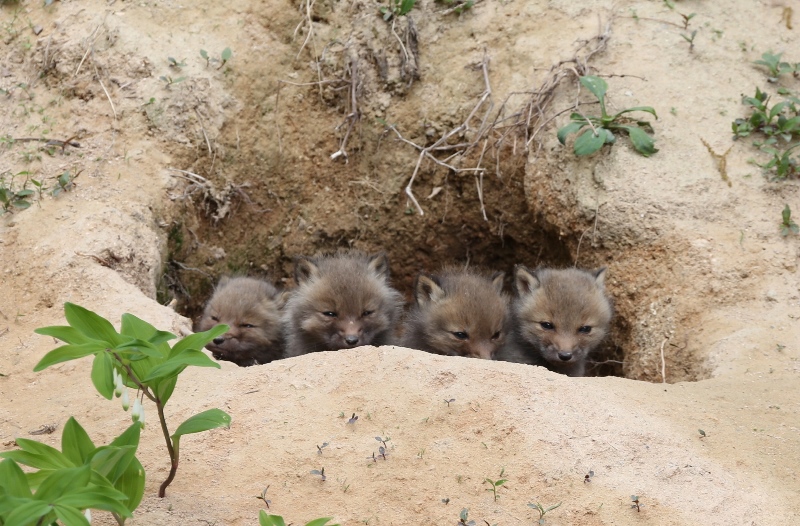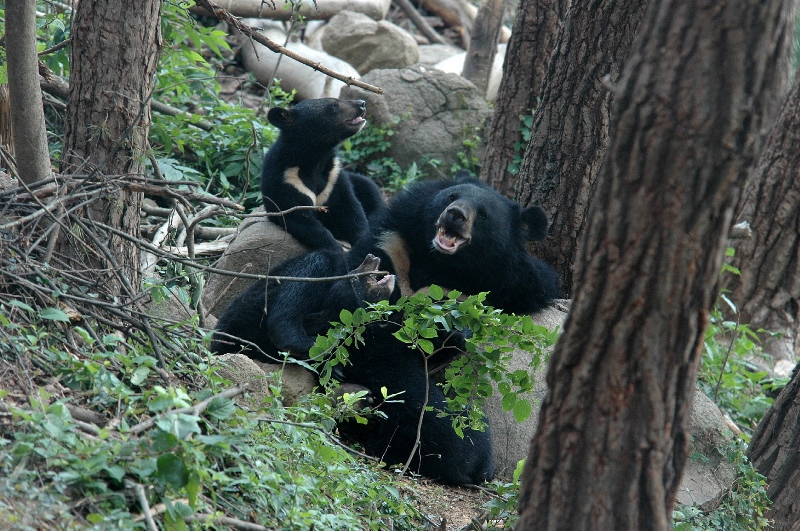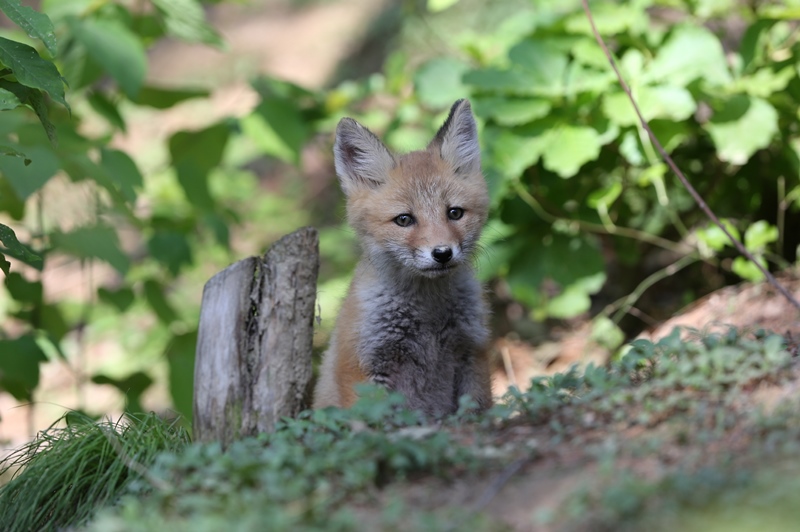Achieving Co-Existence: Restoration of Endangered Species in the Republic of Korea
Since 2002, the Ministry of Environment through the Korea National Park Service (KNPS) has re-introduced 51 Asiatic bears (Ursus thibetanus ussuricus), 22 long-tailed gorals (Naemorhedus caudatus) and 118 Korean red foxes (Vulpes vulpes peculiosa) in Jirisan, Woraksan, and Sobaeksan National Parks, respectively. The successful re-introduction of these endangered species in the wild has promoted biodiversity and healthy ecosystems.

Causes of decline
Wildlife populations on the Korean peninsula declined rapidly during the 20th century as a result of a “pest” extermination programme as well as habitat destruction caused by the Korean war and industrialization. Over 97 tigers, 624 leopards, and more than 1,000 bears and wolves were killed by the extermination programme that ran from 1915 to 1942. There have been no reports of tiger sightings in the Republic of Korea since the 1920s.
The rapid pace of post-war industrialization accelerated the loss of animal and plant species. The few remaining leopards and wolves disappeared in the 1960s as a result of poaching. The foxes, which had preyed on mice, disappeared by the 1970s because of a decline in food sources. In addition, road widening, factory construction, and forest clearance to create farmland intensified, leading to the destruction of habitats.
The Ministry of Environment began protecting endangered animals and plants in 1989, through the Natural Environment Conservation Act. These efforts were strengthened in 2005, with the adoption of the Wildlife Protection and Management Act, which designated 221 species of wild animals and plants as endangered. (The Act was amended in 2018 and 267 species of wild animals and plants were designated as endangered.) One hundred and seventy-six of these endangered species are found in the ROK’s national parks.
Restoration efforts
Efforts are ongoing to secure the health of the overall ecosystem and to promote biodiversity through the restoration of keystone species in the national parks. Restoration programmes are long-term and implemented systematically, using a three-step process: planning, restoration, and feedback.
The planning phase is guided by a comprehensive umbrella plan for the conservation of endangered wildlife developed by the Ministry of Environment, and leads to the preparation of detailed restoration plans for individual species. The planning phase also uses and complies with the IUCN Guidelines for Reintroduction and Other Conservation Translocations.
The restoration phase includes the actual re-introduction of the species in the wild. Asiatic black bear was re-introduced in Jirisan National Park in 2002, long-tailed goral in Woraksan National Park in 2006 and Korean red fox in Sobaeksan National Park in 2011.
Lastly, the feedback phase evaluates the implementation and performance of the restoration plans.

Asiatic black bear
Popular among Koreans as the KNPS mascot, the Asiatic black bear (Ursus thibetanus ussuricus) is a mammal with black hair and a white, half-moon pattern on the chest, belonging to the carnivora family. It is also called the half-moon breasted bear in Korea.
Asiatic black bears are omnivorous, but mostly vegetarian. Their diet is composed of acorns, woody fruits, and plant roots. As a keystone species, Asiatic black bears play an important role in seed dispersal and in maintaining a healthy forest ecosystem.
The Asiatic black bear restoration project is being implemented in Jirisan National Park. Since 2004, 51 bears have been released. Currently, about 69 bears are inhabiting the restoration area, comprising 20 released animals and 49 natural births. Five bears were also born through artificial insemination.
In 2018, the project realised its goal of achieving a Minimum Viable Population (MVP) of 50 animals, two years earlier than the original 2020 target Among the 69 bears, 65 inhabit the Jirisan National Park, whereas four have expanded their range into the Deogyusan – Gayasan National Park.
As the range of the Asiatic black bears has expanded, a Consultative Body for Co-existence has been established. This seeks to prepare a joint response by institutions, organisations, and residents of concerned areas to safeguard the habitats of the bears. The consultative body is composed of the Ministry of Environment, 18 local governments residents, and six NGOs.

Long-tailed goral
Long-tailed goral (Naemorhedus caudatus) live in high-altitude forests with cliffs or rock walls. They have sturdy hooves and two well-developed toes that allow them to climb almost right-angled cliffs.
They are herbivorous, feeding on young leaves, vegetation, and fruits. Long -tailed gorals are keystone species, which are essential to the survival of other species. Similar to the Asiatic black bear, they help in maintaining a healthy forest ecosystem through seed dispersal.
The Long-tailed goral restoration project has been implemented since 2006. Twenty-two Long-tailed gorals have been released in total. Currently, some 102 Long-tailed gorals inhabit the Woraksan National Park, surpassing the original goal for Phase 1 of 100 animals. Genetic mapping by habitat has revealed a common genotype throughout the Baekdu-daegan mountain range and a specific maternal genotype in certain areas in Uljin and Samcheok.

Korean red fox
Inhabiting hills, forests, and farmlands in the country, the Korean red fox (Vulpes vulpes peculiosa) plays a central role in the ecosystem by keeping the populations of pests in check. It feeds on rodents, wild rabbits, carcasses, insects, birds, reptiles and fruits.
The Korean red fox restoration project is being implemented in Sobaeksan National Park. One hundred and eighteen Korean red foxes have been released since 2012, and the goal of achieving an MVP of 50 animals was reached much earlier than planned. Currently, about 67 foxes are inhabiting the park, comprising 53 introduced animals and 14 natural births. A cooperative network for the conservation of the Korean red fox habitat has been formed, with the goal of building a sense of co-existence among communities and the red fox. Under the Korea National Park Service, this consultative body is composed of local governments, road management agencies, experts, and community groups.
As the next step, the restoration projects will shift their focus from increasing the populations of endangered species to enabling coexistence with humans by stabilising habitats, preventing human-wildlife conflict, and promoting other efforts to ensure their long-term survival. Population exchanges will also be undertaken to promote genetic diversity, avoid in-breeding and reduce disease risk.

